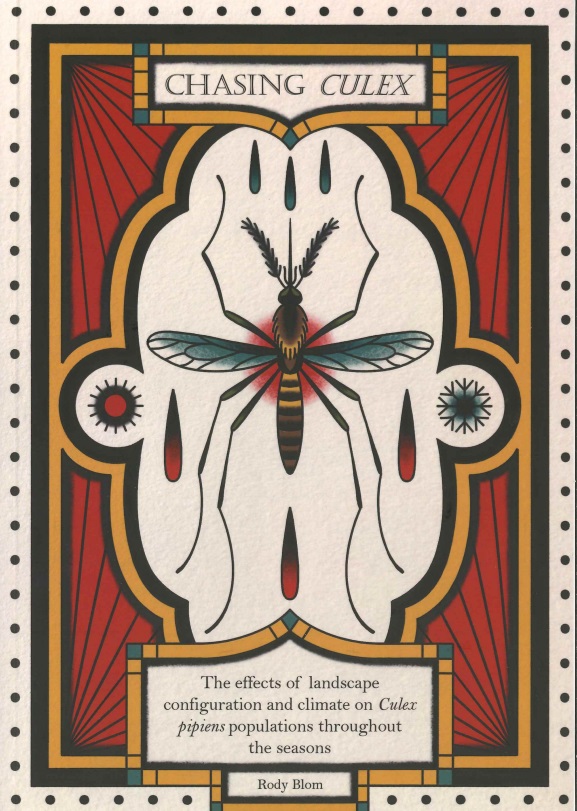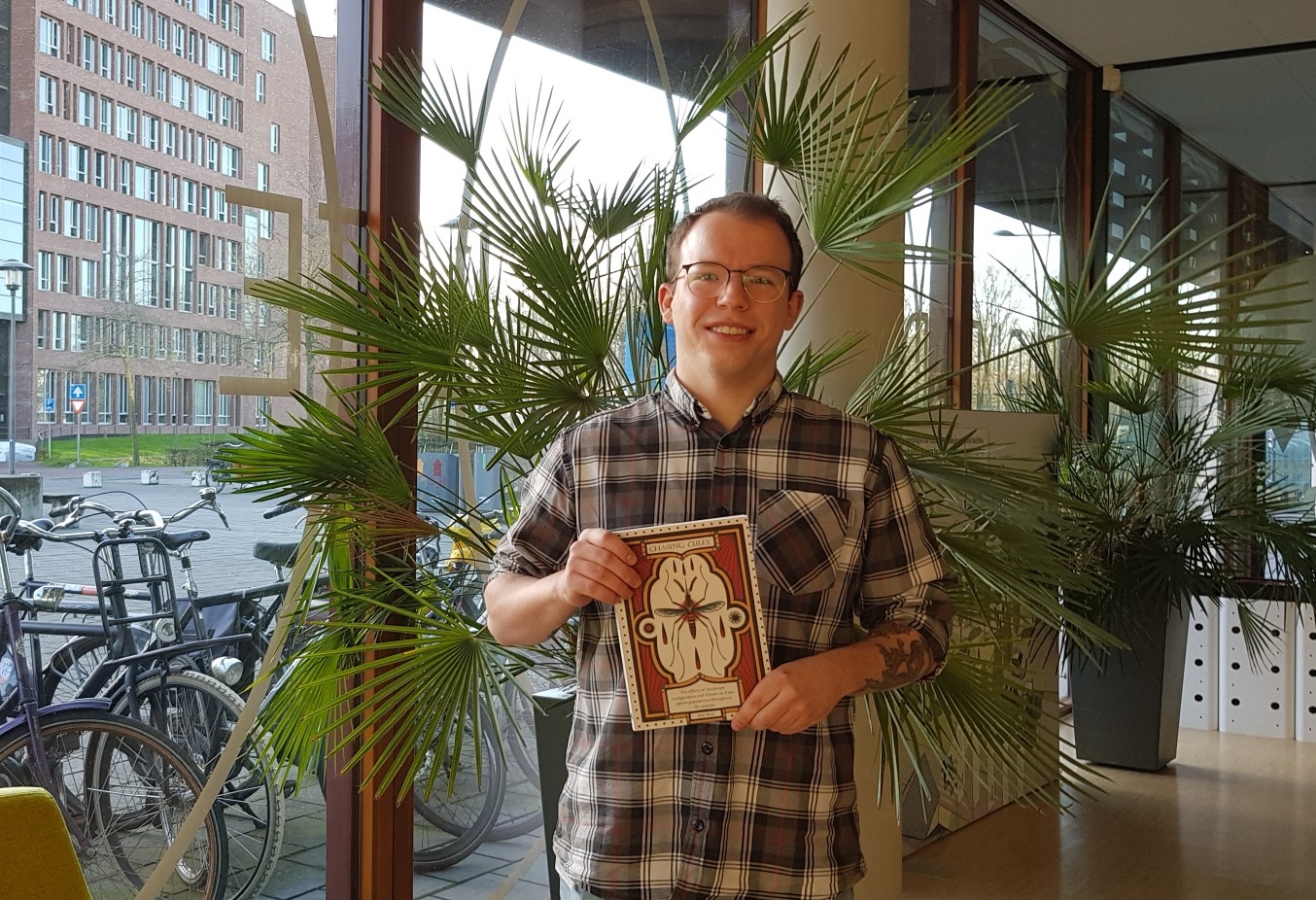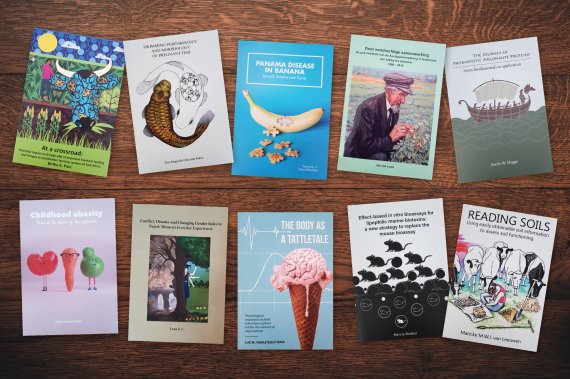The dissertation with which Blom obtained his PhD in August is called Chasing Culex. Culex is short for Culex pipiens, the garden variety mosquito. Blom collected thousands throughout the Netherlands for his research. He took field trips during summer and winter. The Cover Prize’s jury of nine favoured his mosquito cover.
Student Ilja Bouwknegt aptly states: ‘A symmetrical cover that reminds one of an old-school tattoo or a tarot card. Attractive and effective: it is immediately clear that the dissertation deals with mosquitoes and temperature.’ The design is the work of tattoo artist Renee Appelmans from Arnhem.

There was no doubt in Blom’s mind that the cover should feature a mosquito. Nor that Appelmans was to be the designer. ‘I am a big fan of her work and old-school style. I have some of her designs tattooed.’ Blom says the lack of shading and detail and an abundance of red and thick lines are typical of the old-school style.
Ecology
Blom’s study is part of an extensive Dutch study on the impact of climate change on the risks of contracting diseases by viruses transferred by mosquitoes. ‘I focused mainly on the mosquito’s ecology and questions such as whether land use affects the mosquito population and how this relates to climate.’
Elements from that study are depicted on the cover. Blom: ‘A sun and ice crystal represent summer and winter. Raindrops represent the climate, and drops of blood refer to the blood found in the mosquitoes and the bitten animals. Experts will immediately recognise the mosquito as a Culex.’
The drops of blood are a subtle but clear detail that hauts the viewer
Alfred Heijkamp, layout editor Resource
‘The whole thing feels more like a work of art than a traditional dissertation cover’, says jury member Alfred Heijkamp, Resource layout editor. ‘The cover is exciting, elegant and visually impressive. A beautiful translation of a topic into an image. It exudes a sense of apprehension and mystery. The drops of blood are a subtle but clear detail that haunts the viewer.’
Omnia
Jury member Anneke Groen (conservator of Special Collections) qualifies the style as Art Deco. ‘It could easily fit in the Special Collections.’ But that is not where this cover will end up. Rather, it will be mounted on the wall in Omnia. Manager Chris van Kreij intends to replace the portraits of professors that still adorn the walls with posters of the latest four Cover Prize winners.
Resource science editors nominated ten dissertations for the cover prize. Runners up were Taonga Chirwa-Moonga (Exploring Zambian Diets), which came in second and Timber Tales by Brazilian Bárbara Rocha Venancio Meyer-Sand in third place.

 Picture Roelof Kleis
Picture Roelof Kleis 
